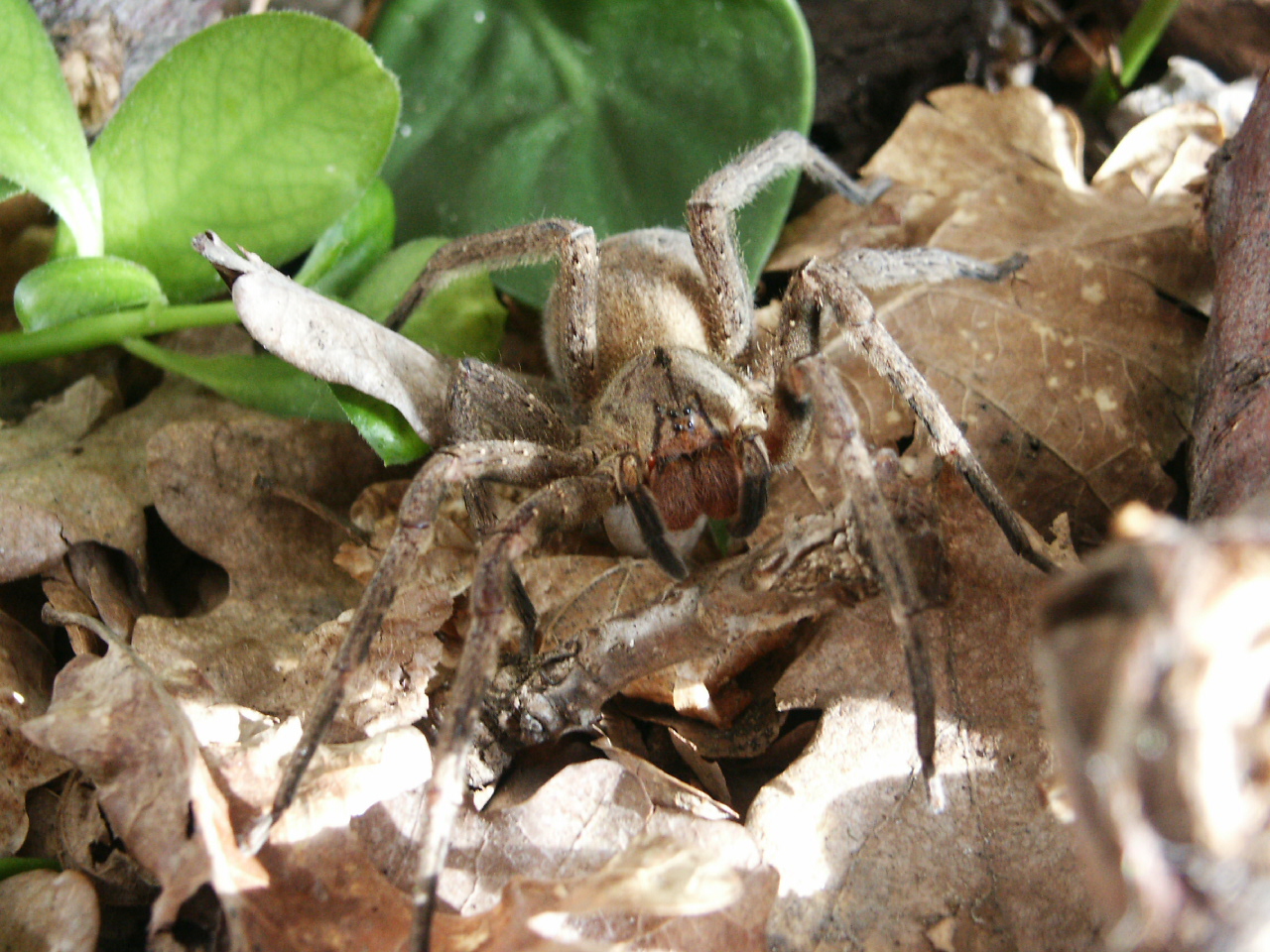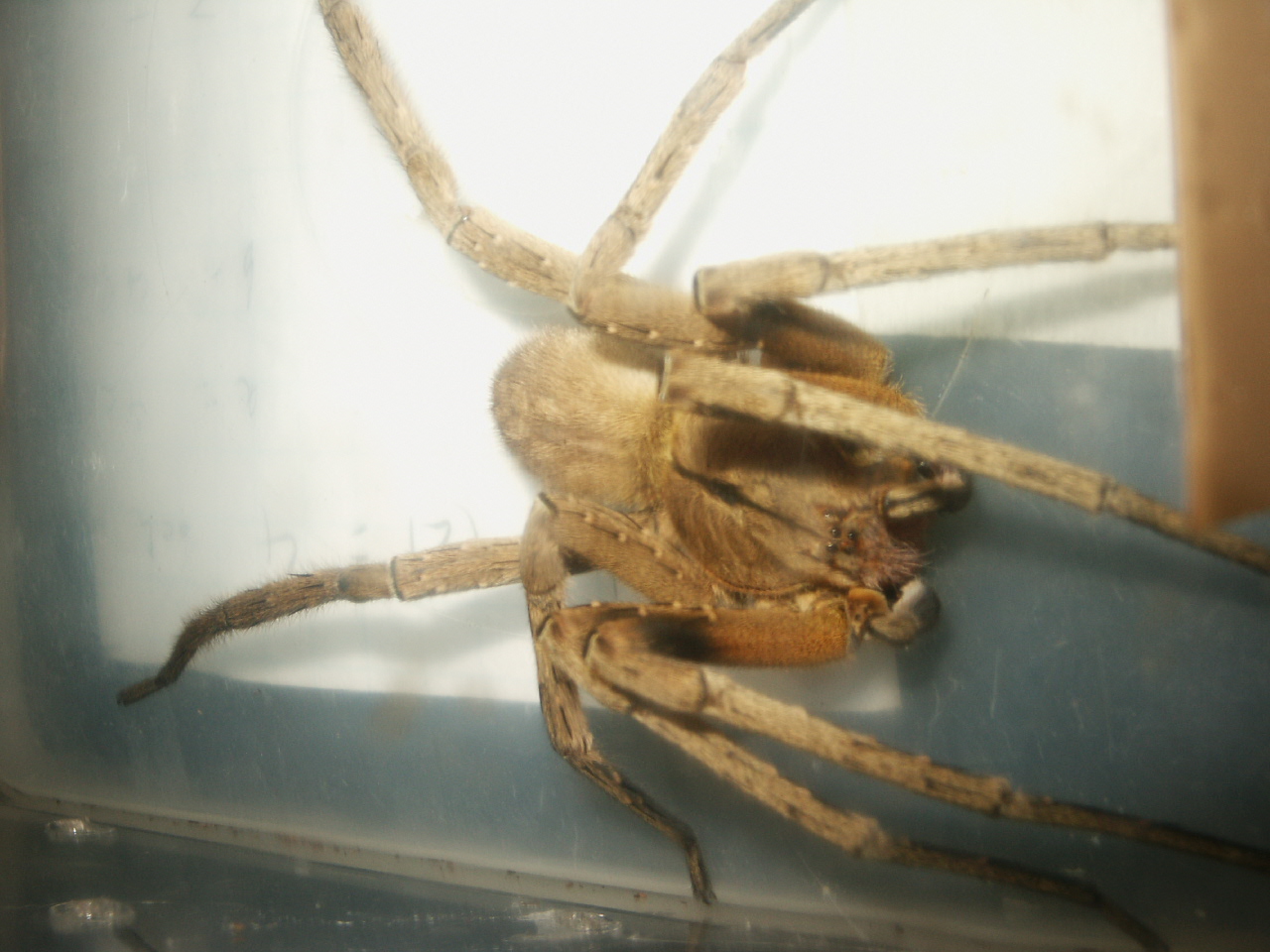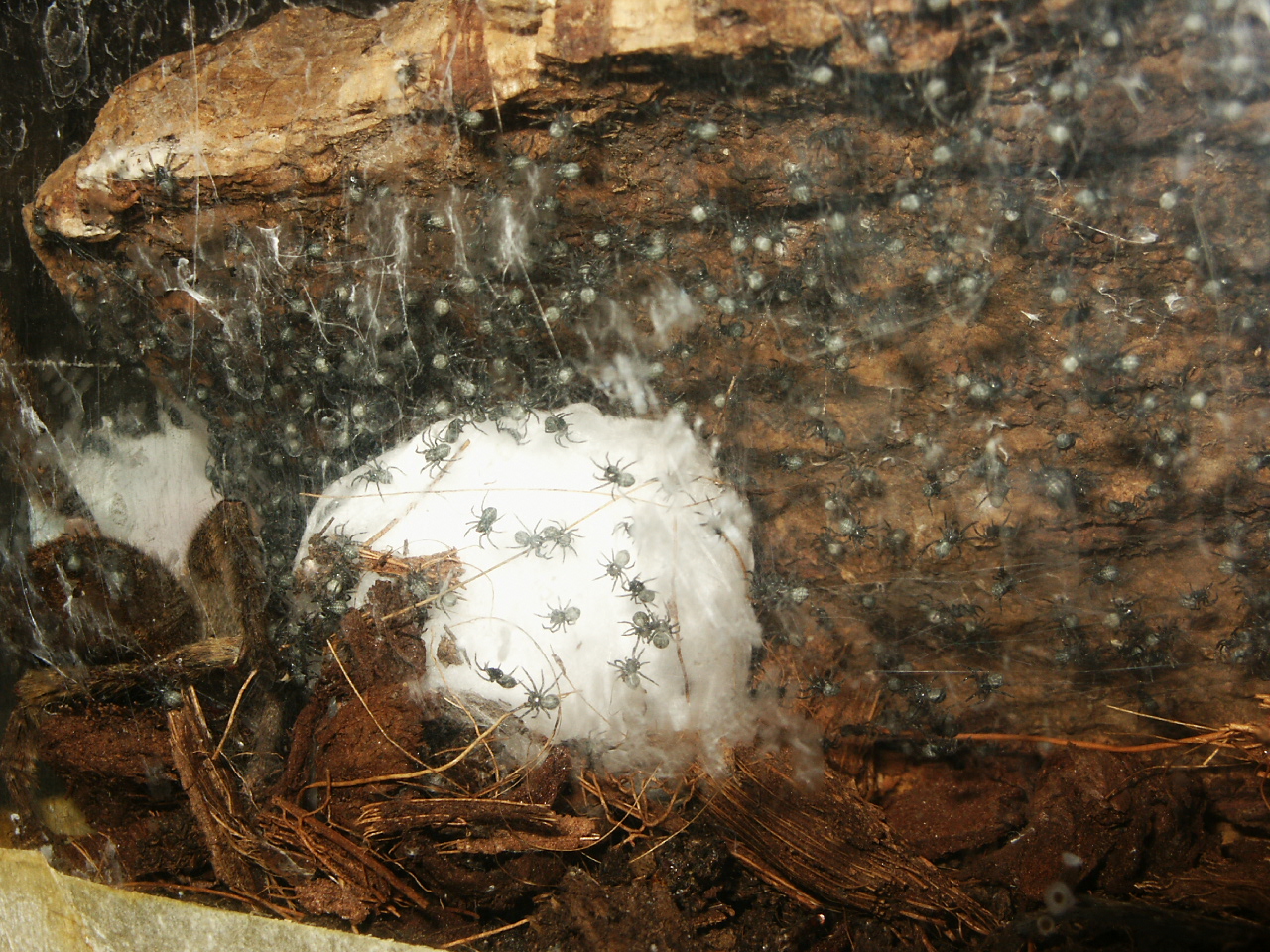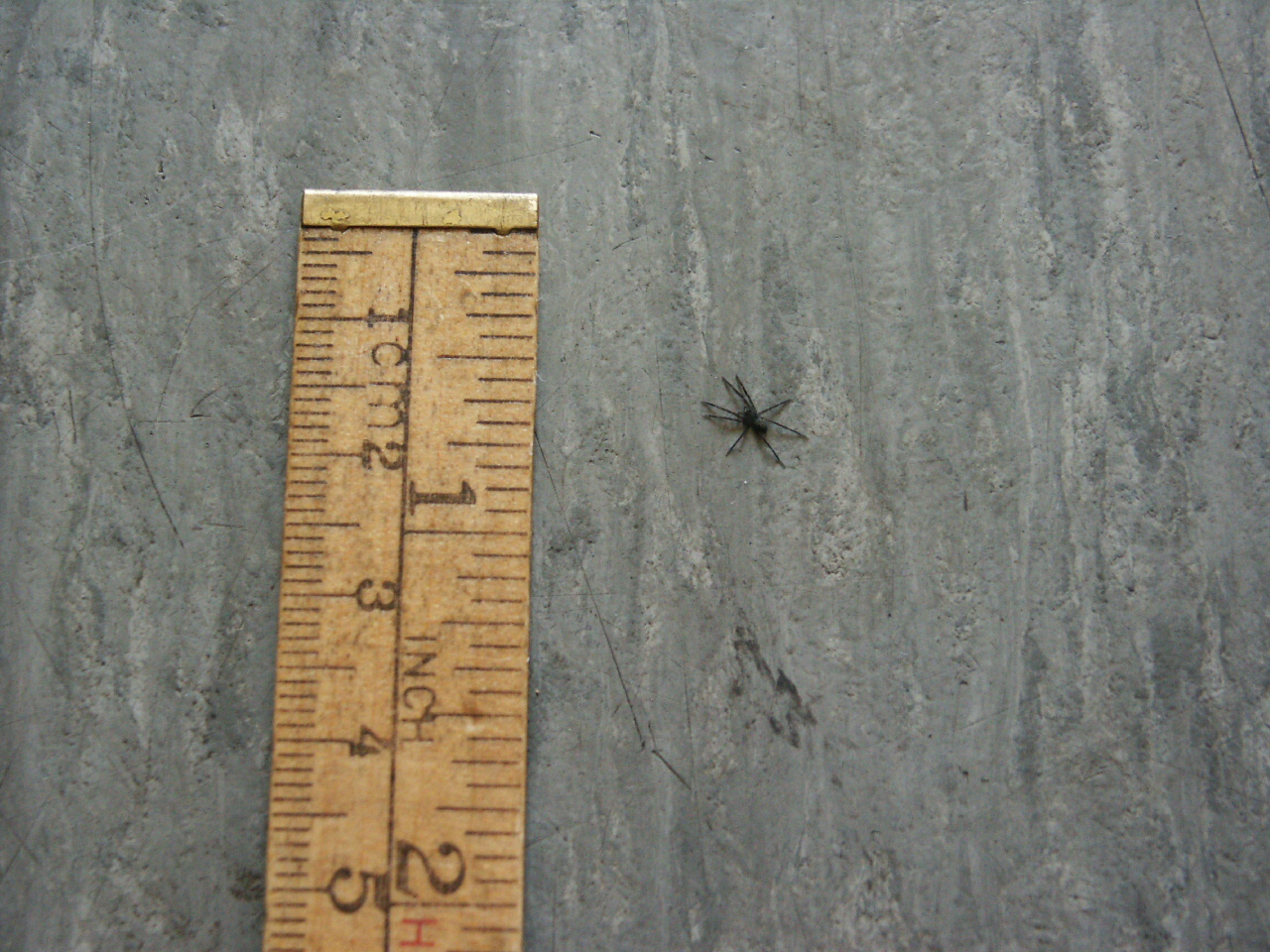
The genus Phoneutria, Perty 1833, wandering spiders
These spiders belong to the family Ctenidae where Phoneutria is one of around 40 genus and the only one known to have a venom potent enough to be a danger to humans.
The genus Phoneutria can be found over large parts of South America and some parts of Central America, 9 species are described 2021:
P. bahiensis, Simó & Brescovit, 2001
P. boliviensis, F. O. P.-Cambridge,1897
P. eickstedtae, Martins & Bertani, 2007
P. fera, Perty, 1833
P. keyserlingi, F.O. Pickard-Cambridge, 1897
P. nigriventer, Keyserling, 1891
P. pertyi, F. O. P.-Cambridge, 1897
P. reidyi, F. O. P.-Cambridge, 1897
P. depilata, Strand,1909
P. bahiensis is endemic to a small area in the state Bahia in Brazil
P. boliviensis occur in Bolivia, Paraguay, Colombia, northwest Brazil, Ecuador, Peru and Central America
P. eickstedtae oocurs in a few spots along the atlantic rainforest in Brazil
P. fera occurs in the Amazon region of Brazil, Ecuador, Peru, Suriname and Guyane
P. keyserlingi occurs in the atlantic rainforest coast of Brazil
P. nigriventer occurs in north Argentina, Uruguay, Paraguay, Central- and South East Brazil
Specimens found in Montevideo, Uruguay, and Buenos Aires, Argentina have probably been introduced by shipments of fruit
P. pertyi occurs in the atlantic rainforest coast of Brazil
P. reidyi occur in the Amazon region of Brazil, Peru, Venezuela and Guyane
P. depilata Guatemala, Honduras, Nicaragua, Costa Rica, Panama, Colombia, Ecuador. All Central American Phoneutria are now depilata (former boliviensis).
Phoneutria differs from other genus in the family Ctenidae by a thick comb of hairs on the lateral edge and ventral part of the pedipalps. Phoneutria also differs from other ctenids by its unique warning display – the body and the two first legpair are kept vertical and then the spider rock from side to side horizontally.

Appearence
Phoneutria nigriventer are quite large spiders, the females 3-5cm in bodylength with a legspan of 13-15cm. The males got a smaller bodysize, around 3-4cm and a legspan of 15cm. The color varies depending on the locality (to the extend that some of these color variants have been described as species) but most common is a overall brown color with small lighter dots with a darker outline that are located in pairs on the abdomen. The ventral side is usually darker in color with a darkbrown or black spot on the abdomen (hence the scientific species name nigriventer that means black belly). Juveniles have a reddish colored patch on the abdomens underside. The legs got the same overall color as the body and its chelicera is red colored.
In nature
You find this species in the southern and southeast of Brazil and in parts of northern Argentina. In other parts of South America such as Uruguay and Argentina its introduced by fruit shipments and most likely in Paraguay which also are mentioned as a distribution area in the literature (pers. corr. Claudio Lipari). Most of the time it spend its days on ground level, hidden behind leafes or pieces of wood. They dont make webs for shelter as many spiders do, and they dont fabricate webs to trap prey in. They hunt merely by eyesight and vibrations.
The venom
The most famous species is Phoneutria fera that in popular literature been dubbed as the most venomous spider in the world. Its open for debate if that is truly the case but fact is they got a very potent neurotoxin, just as nigriventer have. Most people that are bitten by a member of this family is bitten by a nigriventer, mostly because the species appear in heavily populated areas like Sao Paolo and Rio de Janiero while P. fera are found for most part in the Amazon region where the poulation is less dense.
The research on Phoneutria venom is primerily done on nigriventer and some believe that bites that been refered as fera bites are misidentified nigriventer bites and envenomations (pers. corr. Rogerio Bertani, Butantan Inst.)
So how dangerous are nigriventer? Deaths have occured and during the years 1926-1996 14 fatalities happened. Nowadays there are a good working serum available in Brazil that are produced on Butantan Institute in Sao Paulo.
Statistic over bites and fatalities (information provided by Rogerio Bertani, Butantan Inst.):
State Sao Paulo ………….773 bites per year / 1 fatality in 2320 bites
State Parana ……………..150 bites per year / 2 fatalities in 602 bites
State Santa Catarina ………86 bites per year / no fatality
State Rio Grande do Sul …218 bites per year / no fatality
Serum was used in 3,3% of the cases.
The immediate effects after a bite is intense local pain and swelling in the bite area, followed by serious systematic effects like irregular heart rythm, stoppage of the coagulare effects in the blood, priapism, lung edema and vomiting.
One should never take a bite lightly despite the statistics that show that the risk of dying after a bite is quite small. If you are unlucky unpleasant effects and even death can be the result and one should be extra careful if serum is not regulary available.
To give some idea of the potency of the venom the LD50 for nigriventer has shown to be 0.3 mg and for comparison in the same test showed 5.5 mg for black widow, Latrodectus mactans. Note that all LD50 results should be taken with a grain of salt.
In the terrarium
After many years of keeping tarantulas and other spiders I finally got hold of the wandering spider Phoneutria nigriventer. I obtained a number of juveniles and one large adult female. After I had the fullglass terrarium, that measured 30x30x30 cm, set up for the adult I was about to open the plastic box where she was shipped in.
I was very well aware that these spiders could move extremely fast and climb on every surface but still I wasnt ready for what was about to come. She exploded out into the terrarium and darted around the cage a few leaps before calming down and found a secure place behind a piece of cork bark.
Theres no need for a additional heat source for these spiders – a normal swedish room temperature (around 20c) is sufficiant. But if the female lays a eggsack one should increase the temperature a few degrees. The interior can be a few slabs of cork bark leaned against the walls, a few centimeters of peat as substrate and a few dry roots or sticks which makes the set up looks nicer. All other decoration is really unnecessery and dry leaves on the bottom really looks nice and decorative but its quite unsuitable because the spider are blending in so well that you have no idea really where its at when you are about to change the water dish or do other work inside the cage. This is one spider you dont want leaping up your arm!

Besides the obvious difficulties in transfering this species they are quite problem free in captivity. They eat most of what is offered such as crickets, roaches, and even pinkies. The juveniles I kept was also very easy to care for. They grew quite fast and reach sexual maturity in a year. Small newly hatched out spiderlings are quite the opposite – they are extremely hard to keep (more on this further down).
Mating and breeding
After I got two males I was about to try mating my two adult females.
Here is the notes of the event:
On February 11th 2004 I tried to mate nigriventer, acctually two pair of the species. Despite these are fast and nervous spiders the introduction went easier then expected. After the male was introduced to each female I watched holding my breath in suspence in what was about to happen. I had fed the females a lot before (as normally with all spider females before introducing the male).
I couldn’t open the lid and separate them incase the female decided he was food and not a partner – of obvious reasons. I rather had him eaten then risk a bite or a runaway spider.
Only thing i could do was to watch and hope for the best.

After 5 minutes or so the first male started to carefully drum his pedipalps. After a while he started to move slowly, and then stopped. He then started to move his abdomen up and down and I thought he was spinning silk but I didnt notice any silk – maybe it was part of the courting? Slowly he moved towards the female and she towards him. When he felt her legs touch his pedipalps he ran away and hid behind the cork bark. Not a good start.
Some time went by and I introduced the male no 2 to female no 2. I went out to get a cold drink and suddenly I hear a sound like all hells breaking loose in the cage and female 1 and male 1 are engaged in close combat where the male lost. I didnt see him enter the embolus, but she apparently subdued him and had a meal.
The pair no 2 was observed in a mating position but same here, it went so quick so I never saw any insertion of the embolus. He managed to break free but lost a leg, which she ate.
On April the 29th 2004 I observed a eggsack layed by female number 2. Saucer shaped and 3-4cm in diameter. She guarded it constantly by keeping it between her pedipalps and the first legpair.
A nervous wait had begun.
On May 27 the sack hatched and the spiderlings emerged. Ca 500+ (maybe 1000, hard to estimate exactly). The size of them was a few millimeter in legspan. No giants thats for sure! On June 3rd they molted for the first time and I fed them fruit flies a few days after.
A second eggsack is layed by the same female on July 8th. It hatched August 2nd and the number of spiderlings were pretty much the same as the first eggsack.
A third eggsack was layed September 9th. It proved to be infertile or it became dry.
Spiderlings of Phoneutria nigriventer proved hard to raise for me. They died after a few molts for no obvious reason. Collaborating with temperature or humidity didn’t help. A good friend of mine had a small number to survive to juvenile size and our methods of keeping them was pretty much identical. Other wandering spiders, such as Cupennius salei are pretty easy to raise and are often available as captive bred. Allthough I had no problems raising juvenile nigriventer to size. According to Rogerio Bertani at Butantan the nigriventer spiderlings was also problematic to raise in Brazil.


Conclusion
Phoneutria are interesting spiders to keep in captivity if you have a long experience in keeping fast and aggressive spiders. If not its better to stay away from this genus because of the dangerous venom. They are easy to care for and demand not much except a big dose of common sence and much respect.
References
Simó, Miguel & Brescovit, D. Antonio,
”Revision and cladistic analysis of the Neotropical spider genus Phoneutria Perty, 1833 (Araneae, Ctenidae), with notes on related Cteninae” – Bulletin British Arachnology Society (2001) 12 (2) 67-82
Martins & Bertani
The non-Amazonian species of the Brazilian wandering spiders of the genus
Phoneutria Perty, 1833 (Araneae: Ctenidae), with the description of a new species
Zootaxa 1526: 1–36 (2007)
Herzig, von Volker,
Geschlechtsspezifische Variationen im der gift der brasilianischen Kammspinne Phoneutria nigriventer (Keyserling, 1891)
Arachne 9 (4) 2004 4-9
Finally a big thanks to Rogerio Bertani and Claudio Lipari for the personal correspondance.
Latest update April 24th 2021
This article have been published in Swedens Herpetological Society magazine Snoken no 1/2005 p. 17-21
All pictures © Lennart Pettersson
